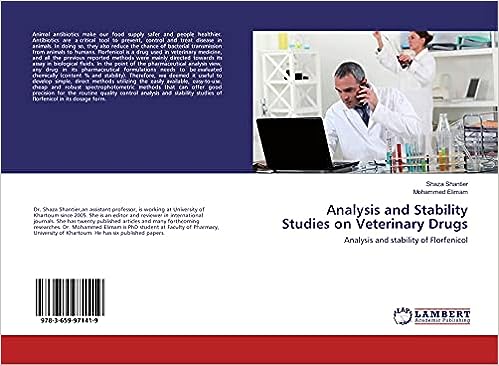Expert Guide to FDA and EMA Stability Chamber Validation Requirements
Introduction
Stability chamber validation is a critical component of pharmaceutical quality assurance, ensuring that chambers used for stability testing maintain precise environmental conditions. Both the U.S. Food and Drug Administration (FDA) and the European Medicines Agency (EMA) have stringent requirements for validating stability chambers, emphasizing consistency, accuracy, and compliance with Good Manufacturing Practices (GMP). This article provides an expert guide to understanding and meeting FDA and EMA requirements for stability chamber validation, covering key steps, documentation, and best practices.
What Is Stability Chamber Validation?
Stability chamber validation
- Installation Qualification (IQ): Ensures the chamber is installed correctly and meets design specifications.
- Operational Qualification (OQ): Verifies that the chamber operates within predefined parameters.
- Performance Qualification (PQ): Confirms that the chamber performs reliably under actual usage conditions.
FDA and EMA guidelines emphasize that stability chambers must comply with GMP and produce reproducible results under real-world conditions.
Key FDA and EMA Requirements
1. Adherence to ICH Guidelines
Both FDA and EMA stability chamber requirements align with ICH Q1A(R2), which outlines stability testing conditions for different climatic zones. Chambers must be validated to maintain:
- Zone I: 21°C ± 2°C / 45% RH ± 5% RH.
- Zone II: 25°C ± 2°C / 60% RH ± 5% RH.
- Zone III: 30°C ± 2°C / 35% RH ± 5% RH.
- Zone IVa: 30°C ± 2°C / 65% RH ± 5% RH.
- Zone IVb: 30°C ± 2°C / 75% RH ± 5% RH.
Accelerated testing conditions (40°C ± 2°C / 75% RH ± 5% RH) must also be validated.
2. Temperature and Humidity Mapping
Both agencies require temperature and humidity mapping to ensure uniform conditions within the chamber. Key points include:
- Perform mapping during empty and loaded conditions.
- Use calibrated sensors to record data at multiple locations.
- Identify and address hot and cold spots to maintain uniformity.
Tip: Mapping should be conducted annually or whenever major modifications are made to the chamber.
3. Calibration and Monitoring
FDA and EMA guidelines emphasize regular calibration and continuous monitoring of stability chambers:
- Calibrate sensors for temperature and humidity at least annually.
- Use automated monitoring systems to detect and record deviations in real time.
- Implement alarm systems to notify personnel of parameter excursions.
Tip: Maintain calibration records as part of your validation documentation for regulatory inspections.
4. Documentation and Validation Protocols
Comprehensive documentation is critical for meeting FDA and EMA requirements. Validation protocols must include:
- IQ, OQ, and PQ plans and results.
- Temperature and humidity mapping data.
- Calibration records and sensor certifications.
- Deviation reports and corrective actions.
Tip: Use standardized templates to ensure consistency in validation documentation.
5. Compliance with GMP
FDA and EMA require that stability chambers comply with Good Manufacturing Practices. This includes:
- Maintaining cleanliness and preventing contamination.
- Ensuring chambers are constructed with GMP-compliant materials.
- Implementing robust maintenance schedules to prevent downtime.
Tip: Conduct periodic GMP audits of stability chambers to ensure ongoing compliance.
Challenges in Stability Chamber Validation
Validating stability chambers can pose several challenges for pharmaceutical manufacturers:
- Complex Mapping Processes: Ensuring uniform conditions across large chambers requires extensive mapping and analysis.
- Cost of Calibration: Regular calibration and sensor replacements can increase operational costs.
- Regulatory Scrutiny: Both FDA and EMA conduct detailed inspections of validation records, requiring meticulous documentation.
Tip: Partner with experienced vendors or service providers to streamline validation processes.
Best Practices for FDA and EMA Compliance
To ensure successful compliance with FDA and EMA stability chamber requirements, follow these best practices:
- Develop a Robust Validation Plan: Include detailed protocols for IQ, OQ, and PQ, ensuring alignment with regulatory expectations.
- Invest in Advanced Technology: Use automated systems for real-time monitoring and data logging.
- Train Personnel: Educate staff on validation requirements and troubleshooting procedures to address deviations promptly.
- Schedule Regular Maintenance: Implement preventive maintenance schedules to avoid equipment failures.
- Engage with Regulatory Experts: Consult with validation specialists to address region-specific requirements effectively.
Emerging Trends in Stability Chamber Validation
Technological advancements and regulatory updates are reshaping stability chamber validation practices:
- Automation: Robotic systems streamline temperature and humidity mapping, reducing manual intervention.
- Predictive Analytics: Advanced software predicts potential failures, enabling proactive maintenance.
- Green Technologies: Energy-efficient chambers minimize environmental impact and align with sustainability goals.
Tip: Stay updated on emerging trends to integrate innovative solutions into your validation processes.
Conclusion
FDA and EMA requirements for stability chamber validation are essential for ensuring the reliability and accuracy of stability testing programs. By adhering to GMP standards, conducting thorough temperature and humidity mapping, and maintaining robust documentation, pharmaceutical manufacturers can achieve compliance and deliver high-quality products to global markets. With advancements in technology and best practices, stability chamber validation continues to evolve, supporting innovation and regulatory excellence in the pharmaceutical industry.
